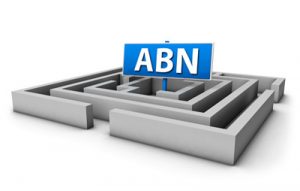 Medicare Maintenance Care- What to Say to the Patient
Medicare Maintenance Care- What to Say to the Patient
After reviewing your documentation and Medicare’s guidelines you realize some of your Medicare patients have entered a maintenance stage of care. You know you can’t bill Medicare for it, but will the patient pay for their own maintenance care? How do you break the news to the patient?
Initiate the Mandatory ABN Form
It is required that offices present and explain the ABN to patients prior to performing any otherwise-covered service (the spinal adjustment) when it is expected that Medicare will deem it not medically necessary today (maintenance care). Encourage and allow the patient to ask questions and review all of their options with them so that they can make an informed decision. Because the language of the ABN might be confusing to some beneficiaries, it is necessary to ensure that you have educated the patient on the ABN form. Make sure they can comprehend and thoroughly understand its intended purpose and meaning.
The patient should know that by signing the ABN, they will be responsible for the payment and they can choose whether to bill the service to get a denial that will allow for appeal. Let them know they have the opportunity to refuse the recommended service. Only the patient or their representative can make the decision to accept or refuse the service/procedure. No suggestions, coercion or undue influence should be put upon the patient to select any of the three options available. (As in, no winking and pointing!)
The following are outlines of specific scripting for several common scenarios that relate to CMT services NOT being covered by Medicare:
| OK, Mrs. Jones, as Dr. Smith mentioned, we have reason to believe that Medicare will not pay for (select one: ongoing care, second visit in the same day, continued care for the same diagnosis) for your (insert condition being treated here) since Medicare will only continue to cover your services when Dr. Smith can document “significant improvement in your function.” At this time, any additional care for (insert condition here) will likely be denied by Medicare, and they expect you to cover the cost of your adjustments. This form is your acknowledgement that you understand this, and that you’re electing to continue with the (maintenance care, visits beyond the allowable, second visit in the same day) and understand you will probably have to pay for the service yourself. (Point to the range of fees in the right-hand box of the ABN form). The fee for the adjustments will range from ______ to ______ depending on how many areas the doctor treats.” |
The Mandatory ABN Form
(Point to each option on the form as you explain this)
| “Your only decision to make at this time is one of these three options:
By checking Option One, you indicate that you would like to have the (maintenance care, visits beyond the allowable, second visit in the same day) and you’d like us to go ahead and bill it, to get a denial from Medicare. This is even though we know they will not cover it based on the way it will be submitted. It will still require that you get paperwork at home, etc. but if you want us to, we’ll submit it. If you choose this option, we could appeal a denial if necessary. By checking Option Two, you indicate that you would like to have the (maintenance care, visits beyond the allowable, second visit in the same day) and you are directing us not to bother billing it. This way, we don’t have to bill them, have them send denial notices to you at home and there is nothing for you to keep track of. But this option would also waive any appeal rights we have. Again, we don’t expect this to be covered anyway. By checking Option Three, you indicate that you are not going to proceed with the (maintenance care, visits beyond the allowable, second visit in the same day) at this time. Which option is best for you, Mrs. Jones?” |
If the patient decides that they do not want the ongoing care or maintenance care, and a team member is completing this step instead of the doctor, be sure that the doctor speaks to the patient at that time to properly document the file. Once you have explained all three options, always ask the patient if they have any additional questions. Make a copy and give it to the patient.
What if the Patient Changes Their Mind?
If a patient signs the ABN and two weeks later decide they want to change their option choice, per the Centers for Medicare and Medicaid (CMS) Internet-Only Manual instructions, the notifier “should present the previously completed ABN to the beneficiary and request that the beneficiary annotate the original ABN. The annotation must include a clear indication of his or her new option selection along with the beneficiary’s signature and date of annotation. In situations where the notifier is unable to present the ABN to the beneficiary in person, the notifier may annotate the form to reflect the beneficiary’s new choice and immediately forward a copy of the annotated notice to the beneficiary to sign, date and return.”
Some patients have additional questions related to this process. Don’t forget to document clearly the patient’s entry into a maintenance stage of care as well as any decisions by the patient to no longer seek treatment.


I am so impressed with the format of the more in depth learning modules. As you know, I've been a member of KMC for many years, first with 1 to 1 coaching and later with the library. My assistant, Rebecca, and I are currently going through the insurance verification modules. After being in practice for many years, I started out thinking this would only be a refresher, but instead, we are We both are neurodivergent and the forms and procedures provided will make our work so much easier. We are learning so much!





